2017 Evil Calling X0 Eagle
(discontinued)
| Where To Buy | |||
|---|---|---|---|
Free shipping on orders over $50 (continental U.S. only).
International shipping available. Some exclusions apply. |
|||
Free shipping on orders over $50 (continental U.S. only).
International shipping available. Some exclusions apply. |
|||

Evil seems to have a habit of coming out with cool new stuff right about the time we get to testing. We were going to try out one of their other models, but when organizing Vital MTB Test Sessions this year they offered up a brand new rig. Of course we jumped at the chance to try out the fresh ride, as it looks to have some refinement and new features to fit into Evil’s growing line of trail weapons.
Fun is a resounding theme in Evil’s line of bikes, and this 130mm travel ripper is no different. Unlike some manufacturers, they don’t have standard lines of cross-country, freeride, or race bikes. All of their bikes can handle a large variety of trails, so it can be tough to isolate what model might best suit you. Keep reading to see what we thought of the newest member to Evil’s family - the derelict younger brother that is bound for trouble. Its name is The Calling.
Highlights
- Carbon frame
- 27.5-inch wheels
- 130mm (5.1-inches) of rear wheel travel // 140mm (5.5-inches) fork travel
- DELTA link suspension design
- Tapered headtube
- Internal cable routing
- Integrated upper chain guide
- Integrated downtube, chainstay, and seatstay protection
- Integrated sag meter on non-drive side DELTA Link
- 73mm threaded bottom bracket shell with lower two ISCG05 mounts and integrated upper guide
- Boost 148mm rear spacing with 12mm through axle
- Measured weight (size medium, no pedals): 29.7 pounds (13.45kg)
- MSRP $6,899 USD

Like all of Evil’s full suspension bikes, The Calling relies on the DELTA link suspension system. While it's a relatively simple single pivot swingarm as far as the back wheel is concerned, the links that drive the shock are what do the important work. Referred to as a "dual progressive leverage rate curve," the suspension is claimed to provide support at all the crucial moments with a playful, responsive feel paired with a predictable ramp to give that bottomless sensation. Evil made the move to the new Metric shock sizing with The Calling, pairing it with a 185x50mm Rockshox Super Deluxe Debonair shock. Thanks to bearings in the upper trunnion style shock mount, the bike gains an even more supple feel than Evil's other rides due to less rotational friction.
The suspension links are dual purpose in that they also provide a small amount of geometry adjustment. There aren’t high or low settings, only a more aptly named ‘Low’ and ‘X-Low.’ The frame’s 'Low' setting features a 66.4-degree head angle as a starting point for finding your groove on most trails. Assuming that groove is pointed at 100% downhill fun, the 'X-Low' setting slackens things to 65.8-degrees. While a bit cumbersome to make the switch due to the large number of bolts involved, once you've done it a few times the process becomes easier. Shock access isn't the best, however.
|
|
|
|
Evil uses a one piece, uni-directional carbon layup for the frame, and has worked in some excellent rubber protection along the downtube, chainstay, and seatstay to keep it looking pretty and quiet chain slap. The 1X drivetrain specific frame also has a fully integrated carbon chainguide that keeps things in line when the trails get bumpy, and the option to add a bash guard using the lower two ISCG05 mounts.
Additional frame details include a tapered head tube, water bottle mount inside the frame, 73mm threaded bottom bracket, and 160mm post mount rear brake tabs. New for The Calling, the rear axle makes the leap to the Boost 148mm standard and now threads into the derailleur hanger. Cable routing is internal for the dropper post and part of the derailleur housing, and we confirmed that both are silent on the trail with no annoying rattling. Evil chose to keep the rear brake external, which we appreciate from a maintenance perspective.
27.5-inch wheels are a departure from some of their recent big-wheeled releases, giving us hope for an even more flickable ride during our time testing it in Tucson, Arizona. It's possible to fit up to a 27.5 x 2.4-inch rear tire in the frame, and those inclined can give 26+ a go with up to a 26 x 2.8-inch tire. With the stock 27.5 configuration there's decent mud clearance.
Our test sled featured Evil's Eagle X0 build kit and slots in at $6,899 USD. It's also possible to purchase the frame and shock for $2,899.
Geometry

Evil offers The Calling in small through XL sizes, accommodating riders from 5'3" to 6'4" (1.6 to 1.93m) tall. At 5'8" and 5'10" (1.73 and 1.78m), our testers opted for a size medium with an on-trend 440mm reach measurement and snug 432/430mm chainstays. The bottom bracket height measured a few millimeters lower than claimed at 331mm in the 'Low' setting.
Suspension Analysis by André Santos
Ready for some hard facts? Using the bike industry's leading linkage analysis software, André Santos, the Youtube suspension whiz, was able to determine a close approximation of The Calling's kinematics for the purpose of this Vital review. These charts provide great insight into several key factors that impact how it rides. Those unfamiliar with these types of graphs should watch André's excellent series of suspension fundamentals videos. The results of his analysis are as follows:
|
|
|
|
Observations:
- Enough progressivity for a 130mm trail bike at 20%.
- Good pedaling efficiency at sag with anti-squat values ranging between 100% and 120%.
- Pedal kickback is proportional to the amount of anti-squat. Since anti-squat remains quite high and constant over the whole travel because it’s a single pivot, the amount of pedal kickback is higher than similar bikes. (eg: The max kickback in the 42-tooth cog on the YT Jeffsy is 18-degrees while The Calling is 25-degrees.)
- Anti-rise around 100% at sag, meaning that the geometry is preserved under rear braking and the rear suspension won’t rise.
- Overall it’s a moderately progressive trail bike with good pedaling efficiency.
So how does science meet the dirt? Did our real life ride time confirm the analysis? It's back to Vital's testers to hear how The Calling performed on trail.
On The Trail
We rode a large mix of trails on the outskirts of Tucson, Arizona, including Incinerator Ridge, Green Mountain, Bug Springs, Prison Camp, and the ultra-rough La Milagrosa. The ups in this area are tough with rare instances of mellow pedaling. It's either techy or steep, and often times both. The downs are littered with every type of trail imaginable, but the most common trait we experienced were loose corners and very rocky terrain that doesn’t take kindly to halfhearted focus.

We followed Evil’s recommended settings when we initially set out for the trails, upping the air pressure in the shock to let it sit at around 30% sag while seated. One really cool feature is the integrated sag meter located on the non-driveside of the frame within one of the DELTA system links. This is a somewhat unnecessary feature as it isn’t too difficult to read the sag gradients on the RockShox Super Deluxe shock, but it's a neat touch, especially if you ever swap shock brands. Knowing the bike has a pretty progressive rear suspension design, we added two Bottomless Tokens and 75psi to the 140mm travel RockShox Pike RCT3 fork to balance the bike out.
The Calling is on the slacker end of the spectrum considering its 130mm travel chassis. At 66.4-degrees in the 'Low' position its head angle is near what many 150mm travel bikes sport, so that's the option we ran. 'X-Low’ is recommended for the bike park and trails where pedal spiking would not be an issue. It almost goes without saying, but Tucson would be perilous in the slacker mode.
The stability of the ride didn't surprise us considering the angles, but what did surprise us was how balanced it felt. Everything felt like it had purpose.
Despite an initially shorter feeling cockpit with the included 35mm length stem, once we were riding it was easy to move around the bike and the whole package really came alive. The stability of the ride didn't surprise us considering the angles, but what did surprise us was how balanced it felt. Everything felt like it had purpose. The slack angles worked well with the low bottom bracket, making The Calling a real shred sled. The chainstays aren’t overly short either, so that helps with weight bias front to rear and overall stability. It felt even better when we dropped sag a little bit to create a feeling of being ‘in’ the bike rather than on top of it.

The tough part in setting up bikes that are progressive up to the sag point is that just a few percentage points can have a drastic difference in where the bike rides through bumps, and how bottom out is handled. We were leery about sagging through more than 30% travel at first, especially considering there was only so much travel left after sag, but we tried anyway and we were glad we did. Dropping the rear shock’s pressure to give us sag in the 32%-34% range allowed us to feel in the bike, and it actually made the bike easier to move around. Natural jumps were super rewarding and cornering became unreal with the bike never standing up on us. Successive hits were not a problem as the bike and robust build wanted to go in fast and skip over bumps as much as the pilot would allow. It never felt like it would do us wrong, and the bike turned into a great ride over all terrain while pointed downhill. While it's entirely possible the 30% sag number would work well in certain types of terrain (the Pacific Northwest, perhaps?), once dialed in a bit deeper both testers found themselves pushing into Tucson's roughest bits even harder just to see what they could get away with.
RockShox's Super Deluxe rear shock works extremely well and was a big part of the bike’s ability to control what little travel it had so well. We chose to slow down the rebound by an additional click after what we thought was good and the bike still excelled through consecutive hits. The damping and spring rate worked together well, giving us a very planted feel we normally get out of bikes with more travel. A lot of it is due to the tire selection and initial suspension feel. Small bump performance was outstanding, chatter was dealt with in every circumstance, and small trail undulations became our playground.
The Calling is less of a rocket ship than comparable 130mm travel rides, but instead prioritizes fun on the way down.
Because of how supple the bike is - and we fully recognize how that only adds to this bike's personality - one area that suffers is pumping. It allowed us to go fast but didn’t get there quickly or gain speed on every trail dip. This could have been a result of the wheels and tires, which we will dive into a bit later, but with such supple suspension it's difficult to even feel speed sometimes. A lot of shorter travel bikes are capable of doing what longer travel bikes do, but their advantage shows itself in between technical features thanks to gains in efficiency. The Calling is less of a rocket ship than comparable 130mm travel rides, but instead prioritizes fun and suspension performance on the way down. We imagine future owners won't have any trouble finding great trails that make use of its strengths.
Just last year we rode The Following, Evil's aggressive short travel 29er. Even though this isn't a comparison test, we feel referencing that bike has purpose. Both bikes have a similar suspension system, similar frame and materials, and possibly similar customers. While The Following rolls over things better, it also becomes overwhelmed in the suspension department sooner than The Calling. That’s not to say The Following wasn’t excellent - we did name it the 2015 Bike of the Year - but it was specific in its strengths.
The compliment (or backhanded compliment?) of carrying its weight well applies perfectly to The Calling. At 29.7-pounds (13.5kg) the bike isn’t light, the wheels aren’t light, the frame isn’t svelte, and the entire package does not scream efficiency. However, when riding the bike most of that weight disappears. Changing lines was easy, the stiff frame really let us move the bike side to side with ease, and jumping was fun. The added heft in the right places (like tires) gave us a bit more confidence to really push through rough sections with speed, which in turn allowed us to pedal just a bit less. We call it a wash compared to bikes with a trimmer waistline, at least on Tucson's Mount Lemmon trails.
When the trail pointed uphill a little more than we wanted, we were once again reminded that this bike is made for fun versus outright efficiency. The tires and wheels are the main culprits of this in our minds, having drag on both the trail and their own spinning/freewheeling. The suspension on The Calling is fairly neutral, so if you mash on pedals, it will bob. If you are smoother, then the suspension will still be free to absorb small trail undulations. This was a particular benefit on some of the looser, rockier climbs. With the SRAM Eagle drivetrain’s gearing range, given enough power and motivation a rider could possibly clean sections that they couldn’t on a bike that was lighter but didn’t benefit from the traction created by The Calling's supple suspension. And what about those pesky slogs up fire roads and smooth climbing trails? Well, there's a handy dandy (and very effective) climbing lever that's readily accessible on the top of the shock for those times.
Build Kit
As one would expect of a $6,899 ride, the "Eagle X0" build kit on The Calling is top notch. SRAM's X01 Eagle drivetrain, e*thirteen's TRS tires, top end Race Face bits, a 150mm Reverb dropper post, and the newest RockShox suspension highlight the package.
Vital readers, prepare yourselves - we wanted a longer stem. The 35mm length Race Face Atlas stem is unnecessary on this bike in most riding situations, and actually hinders The Calling’s climbing ability. With the slack head angle and short stem, it was tough to keep the front end on the ground during some difficult climbs. Bumping up to a 50mm stem allowed us to go from uncomfortable climbing to acceptable, and the extra room in the cockpit was appreciated.
While the stem wasn’t perfect, the handlebar was. The included Race Face SIXC carbon bar is plenty wide for all at 800mm, allowing you to trim it to your desired width. It's still rare to get a bar with some proper rise these days, often forcing you to run several stem spacers, so we were pleased with the clean appearance of the 35mm rise setup. We still suggest a few spacers, however, to get your weight in the best position.
|
|
|
|
We had the benefit of knowing how some of Evil’s other bikes rode when we initially set up The Calling, and knowing that made a huge difference. With two tokens in the RockShox Pike RCT3 fork the front of the bike matched the back well, and the adjustable compression damping was a big plus for us. The sensitivity was great and the chassis was stiff enough, but it wouldn’t be out of the question for some heavier riders to have a 150mm travel Lyrik or FOX 36 put on this bike to match the very robust back end.
As mentioned, some of that feeling of security and robustness comes from Evil's choice of tires. It was refreshing to see some rubber that means business on the trails, not on a lightweight spec sheet. e*thirteen's TRS tires have incredible cornering grip. The casings are supportive and the braking/driving knobs are all one would ever want. They could be the perfect trail tire, assuming your trail doesn’t get too flat. They don’t roll that well, but we have yet to find a tire that is durable, has great traction, and rolls really well. We’ll pick the first two.
It was refreshing to see some rubber that means business on the trails, not on a lightweight spec sheet. e*thirteen's TRS tires have incredible cornering grip.
The stock aluminum e*thirteen TRS+ wheels look awesome on the bike. The hubs match the frame’s robust build, the rims provide a wide seat for the TRS tires, and they came stock in a tubeless configuration. The visual appeal and setup are just one part of what is necessary though. What we didn’t like about the wheels was the large amount of drag they exhibited. We tried backing torque off the hubs and axles on both the front and rear wheels, but couldn’t get them to spin well. The high-engagement freehub also had a lot of drag, something that unfortunately didn’t get better through our time on the bike. Coupled with the tires, we felt like we were working just a bit harder than normal. Aside from the rolling issue, they were durable, stiff, and worked really well when pointed downhill. Following our test we reached out to e*thirteen, who believed the drag on the rear wheel was likely due to a missing spacer during hub assembly. Drag on the front hub can be somewhat addressed by pulling the end caps and adding grease as needed.
We appreciated the SRAM Guide RSC brakes paired with 180mm rotors. The power was good, not great, but the tradeoff for that was awesome modulation. The extra rotational weight of the bike did take a little bit of time to slow down, but it was never an out of control feeling.

A highlight of the build kit was the SRAM Eagle X01 drivetrain, which allowed for us to get up some of the steepest climbs we encountered. That was of course aided by the grip from the TRS tires and sensitivity of the suspension, but the extra low gear compared to what we’ve been used to on 1X drivetrains really was a game changer. We had no dropped chains and appreciated the slightly smoother nature of the Eagle drivetrain compared to previous 1x11 setups.
The Calling’s integrated chainguide kept the chain on throughout all of our testing, and the downtube guard was a welcomed addition through our rocky endeavors.
A majority of the frame has fantastic rubber molded protection. One area that wasn’t up to par was the inside of the driveside seatstay. Paint was starting to chip away in the problem area due to chainslap, which no doubt would be remedied with a bit of mastic tape or a longer area of molded coverage. An otherwise quiet and stable bike sounded a little worse than it actually was because of this. The relatively close proximity of the chain to the seatstay also likely contributed to the noise.
We imagine many riders will spec their Callings from the ground up, so we don’t see too much of a worry about not getting what you want from the build. The wheels are tough to fully recommend solely because of the drag, but they could be worth it if you need some of the most robust hoops around. Past that, maybe a 200mm rotor up front? While this thing only has 130mm of travel, with the way it rides and the terrain it can handle we wouldn’t call anyone crazy for using a bit more power in the stopping department. Oh, and ditch the grips. Some company logos work well for hanging onto, but these don't.
Long Term Durability
Evil's days of questionable durability are long gone. They have made great strides in recent years and we couldn’t be happier with everything we’ve ridden. The back end is very robust and flex free. The pivots are easily accessible and have torque specs on every location. Even the derailleur hanger is burlier than most and easily replaceable. Combined with the molded frame guards, we see very few weak points in the Evil’s construction. It's also backed by a three year limited warranty.

What's The Bottom Line?
Evil's The Calling is a great system with angles that match and supple suspension that works very well, ushering in new descending capabilities to the 130mm bike realm. Its home is on swoopy trails with corners that are on the border of too steep or just right and jumps of all varieties. It also isn't fazed much by the rough and rowdy bits thanks to an excellent overall package. We wouldn’t even be opposed to taking this to some jumpy bike parks, which is more than we can say about the vast majority of short travel bikes we’ve ridden. The Calling will handle all of that and more - how much more is largely dependent on your own bravery. Once you're dialed in... game on!
Visit www.evil-bikes.com for more details.
Vital MTB Rating
- Climbing: 3 stars - Good
- Descending: 4.5 stars - Outstanding
- Fun Factor: 5 stars - Spectacular
- Value: 4 stars - Excellent
- Overall Impression: 4 stars - Excellent
Bonus Gallery: 30 photos of the 2017 Evil The Calling Eagle X0 up close and in action
About The Reviewers
Steve Wentz - Age: 32 // Years Riding MTB: 21 // Height: 5'8" (1.73m) // Weight: 173-pounds (78.5kg)
"Despite what it looks like, I'm really precise and calculated, which I'm trying to get away from. I'm trying to drop my heels more and just let it go." Steve is able to set up a bike close to perfectly within minutes, ride at close to 100% on new trails and replicate what he did that first time over and over. He's been racing Pro DH for 13+ years including World Cups, routinely tests out prototype products, and can squish a bike harder than anyone else we know. Today he builds some of the best trails in the world.
Brandon Turman - Age: 30 // Years Riding MTB: 16 // Height: 5'10" (1.78m) // Weight: 175-pounds (79.4kg)
"I like to have fun, pop off the bonus lines on the sides of the trail, get aggressive when I feel in tune with a bike, and really mash on the pedals and open it up when pointed downhill." Formerly a Mechanical Engineer and Pro downhill racer, Brandon brings a unique perspective to the testing game as Vital MTB's resident product guy. He has on-trail familiarity with nearly every new innovation in our sport from the past several years and a really good feel for what’s what.

About Test Sessions
For five years a dedicated crew of Vital MTB testers have been bringing you the most honest, unbiased reviews you'll find anywhere. This time around we rode 2017's most exciting trail, all-mountain, and enduro bikes on a wide variety of rowdy trails in Tucson, Arizona. Reviews can be accessed 24/7 in our Product Guide. Test Sessions was made possible with the help of Arizona Cyclist. Tester gear provided by Troy Lee Designs, Specialized, Five Ten, ZOIC, Sombrio, Race Face, and EVOC. All photos by Lear Miller.
Specifications
Rear: e*thirteen TRS+, 2.35 Durable Dual
BOLT ON AXLE - Axle Bolts Directly into the Derailleur Hanger
DELTA SYSTEM - Trunnion Mount to Work with Metric Shock Standard, Upper Shock Bolts Run on Bearings
SAG METER - Integrated Sag Meter in the Non-Drive Side Delta Link for Suspension Set up (Push It Forward, Sit on the Bike, Adjust Air Pressure to 30%)
| Where To Buy | |||
|---|---|---|---|
Free shipping on orders over $50 (continental U.S. only).
International shipping available. Some exclusions apply. |
|||
Free shipping on orders over $50 (continental U.S. only).
International shipping available. Some exclusions apply. |
|||
































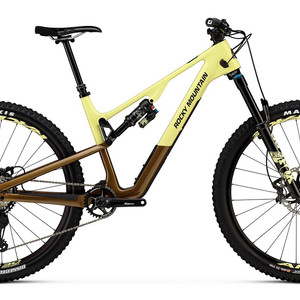
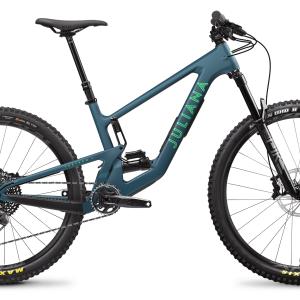

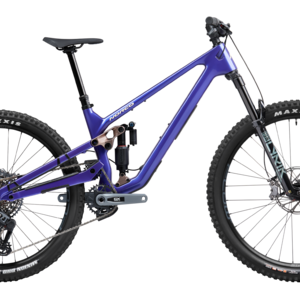
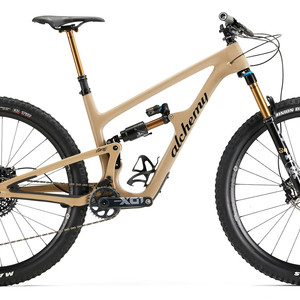
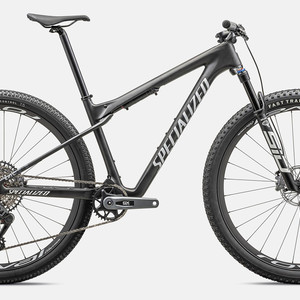
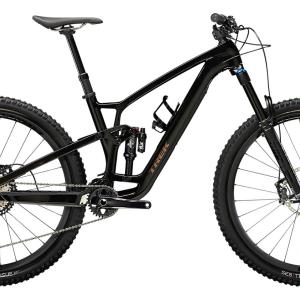
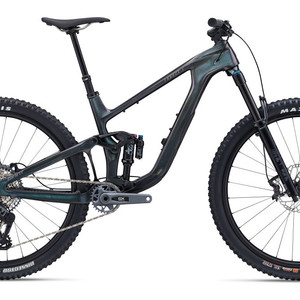






15 comments
Post a reply to: Review - 2017 Evil The Calling from Vital MTB Test Sessions